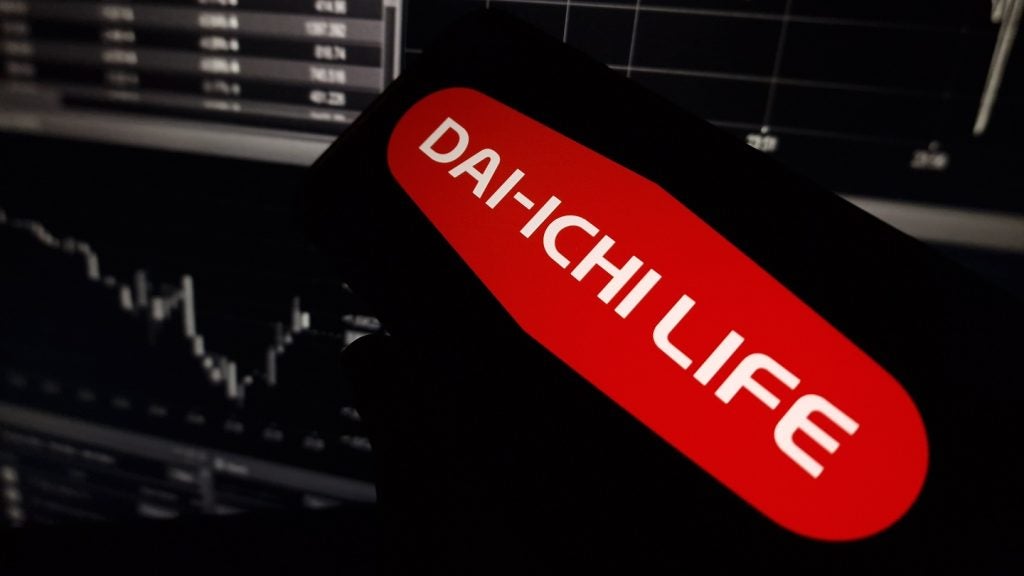
Although New Zealand’s life insurance industry is not as strict as in Australia, local regulation is improving under the Reserve Bank of New Zealand with the introduction of the Insurance (Prudential Supervision) Act (IPSA) 2010. The industry is also preparing for challenges following the seriousness of the Christchurch earthquake, as well as the slow pace of economic growth, according to a report Life Insurance in New Zealand Key Trends and Opportunities to 2016, which is available at the Insurance Intelligence Center.
The impact of the Christchurch earthquake in New Zealand is expected to generate a renewed risk awareness among the population about the need for life insurance products. In addition, the country’s aging population and insurers’ efforts in product development to cater to the changing needs of consumers is expected to drive the life insurance segment growth over 2012-2016.
Overall, the key business drivers for the New Zealand life insurance market during 2007-2012 were:
– Low life insurance penetration
– New regulations are anticipated to increase consolidation
– An aging population
– Household savings report positive figures for first time in more than a decade
In the first place, the penetration level for life insurance products in New Zealand, as measured as a percentage of GDP, averaged at 0.72% during the review period, revealing that New Zealanders are underinsured. (Provide a comparison with Australia or Japan). The devastation caused by the Christchurch earthquake at the beginning of 2011 is expected to raise the level of awareness among the population towards realizing the benefits of life insurance. This presents insurers with the opportunity to expand market shares by developing new products which cater to the changing needs of the consumer.
Secondly, new standards under the Insurance (Prudential Supervision) Act (IPSA) in the form of minimum capital requirements (MCRs) and catastrophe risk capital charge are deemed to be too time-consuming for the small and niche insurers.
This is expected to drive consolidation in the market, with larger insurers in a better position to increase their presence and acquire smaller companies.
How well do you really know your competitors?
Access the most comprehensive Company Profiles on the market, powered by GlobalData. Save hours of research. Gain competitive edge.

Thank you!
Your download email will arrive shortly
Not ready to buy yet? Download a free sample
We are confident about the unique quality of our Company Profiles. However, we want you to make the most beneficial decision for your business, so we offer a free sample that you can download by submitting the below form
By GlobalDataAnother important trend shaping New Zealand’s life insurance market is that the country’s population is aging because of sustained low fertility and low mortality rates.
According to the national statistics from March 2012, there are now 600,000 New Zealanders aged 65 years and over, accounting for 14% of the population.
Half a century ago, there were just over 200,000 people in this age group, representing only 8% of the total population. An aging population is expected to contribute to the growth of retirement-related life insurance products such as pensions, annuities and superannuation products over the forecast period.
Finally, according to the New Zealand treasury statistics, household savings reported a positive figure for the first time in 12 years.
New Zealand’s household sector saving was $200m for the year ending March 2011 (0.2% of household net disposable income).
The last positive saving was reported in 2000. In 2010, household spending exceeded income by US$1.6 billion. The increase in the saving rate is expected to have a positive result on the demand for life insurance products.
Market outlook
The life insurance market in New Zealand remains underdeveloped, with the insurance penetration rate, as a percentage of GDP, remaining below 1% during the period 2007-2011, revealing that New Zealanders are highly underinsured.
The low penetration rate of the life insurance segment in New Zealand can also be assessed from the Christchurch earthquake experience, whereby many of the victims were uninsured. Premium per capita paid witnessed a consistent rise during the 2007-2011, but was still low at NZD344 ($272) at the end of 2011.
The fundamental reason for the underdeveloped life insurance market in New Zealand is the preference for social welfare schemes, provided through the universal pension by the government and on the Accident Compensation Corporation (ACC), for benefits that are usually just provided by life insurance companies.
KiwiSaver schemes, a work-based savings retirement initiative by the government in which New Zealand citizens who are 18 years old and older and who are permanently employed are automatically enrolled, is also favored as opposed to insurance policies.
According to Morningstar, the total assets under management of the KiwiSaver schemes in New Zealand grew from NZD954.10 million in June 2008 to NZD11.26 billion at the end of March 2012.
This is substantially high when compared to the gross life insurance premium amounting to NZD1.52 billion (US$1.20 billion) in 2011. However, the expansion in the KiwiSaver scheme is slowing, as indicated by the latest data.
The life insurance segment in New Zealand continued to grow during 2007-11, albeit at a moderate pace with the gross written premium rising from NZD1.20 billion (US$0.88 billion) in 2007 to NZD1.52 billion (US$1.20 billion) in 2011, recording a CAGR of 6.1%.
Growth in the market was partially influenced by new business being written, with the majority of the growth due to natural factors such as premium increases from annual age or inflation adjustments and increases to existing cover.
The uncertain economic conditions impacted the purchasing power of the consumers and a low interest rate environment led to moderation in the profitability of insurance products. Increases in the rate of tax on life insurance products in early 2010 forced industry participants to increase premium rates, putting additional pressure on demand.
Recently, the industry is preparing for several challenges as a result of several earthquakes and an overhaul of regulation in the form of the Insurance (Prudential Supervision) Act in 2010. However, these factors are expected to lead to a fundamental shift in the life insurance market and hope to renew risk awareness among customers.
Although the life insurance industry in New Zealand is not as strict as Australia’s, the local regulation is improving under the Reserve Bank of New Zealand as prudential supervisor.
With the introduction of the Insurance (Prudential Supervision) Act 2010 (IPSA), all insurers are required to obtain a license from the Reserve Bank of New Zealand (RBNZ) by 7 March 2012 and to obtain a full license by September 2013. This licensing requirement includes compliance with solvency standards, scrutiny of the suitability of senior personnel and appropriate risk management policies.
The IPSA also introduced a minimum solvency capital (MSC) level of NZD5 million for life insurers. According to the RBNZ report, the number of life insurers who obtained licenses stood at 30 as of March 2012. It is anticipated that the new act may lead some insurers to merge and others to exit the industry, resulting in a handful of the larger insurers offering a range of new products.
Looking ahead, New Zealand’s life insurance segment is expected to remain stable and register a CAGR of 5.9% over 2012-2016, supported by a steady recovery in economic conditions that have been affected by natural disasters.
Rising disaster awareness and an increase in understanding of risk management measures will put upward pressure on premiums.
Product developments are underway in order to attract consumers on account of change in perceptions towards life insurance following the devastation caused by the natural disasters. The combined ratio of the New Zealand life insurance segment averaged around 76% during 2007-2011. stating that the segment was making underwriting profits which may encourage more competitors to enter the market.
Overall, high underinsurance, coupled with the country’s growing aging population, is expected to create demand for life insurance products.
Competitive landscape
New Zealand’s life insurance segment includes both local and foreign owned insurers who operate using either branches or local subsidiaries.
The life insurance segment is highly concentrated with the top five companies accounting for a 76% share in the gross written premium in 2010.
Smaller companies include competitors such as Pinnacle Life. Sovereign Assurance Company Limited accounted for the highest market share of 30% of the total life insurance written premiums in 2011.
The highly underinsured market meant more room for opportunity, which led to the emergence of a new competitor, Partners Life, who entered the life insurance market in August 2010. The company offers a full range of life risk products for the protection of New Zealand families and businesses.
Sovereign Assurance Company Limited was the leading life insurance company in New Zealand during the review period with a market share of 30% of the total life insurance written premiums.
The life insurance segment in New Zealand is dominated by five leading insurers who together accounted for a total market share of 76% in 2011.
Some of the large life insurance companies operating in New Zealand, apart from Sovereign Assurance Company Limited, are: AMP, Asteron Life Limited, AXA New Zealand, AIA New Zealand, ACE Insurance Limited, Tower NZ, Westpac life Insurance and CIGNA life Insurance.
Other regulatory rules in New Zealand
The catastrophe risk capital requirement for life insurers must be set at a practical level in order to minimize insurer failure and hence adequately protect policyholders.
For New Zealand life insurers, the capital requirement calculation for catastrophe risk represents additional capital, compared to solvency calculated under the New Zealand Society of Actuaries (PS5).
Each insurer is required to propose a catastrophe risk capital charge specific to any other major risks that are borne by the licensed insurer, including natural disasters and the exposure arising from concentration risks under group risk policies. The total catastrophe risk capital requirement is higher than the pandemic capital charge and the catastrophe charge relating to other major risks.
The RBNZ can, under section 59 of IPSA, exempt an overseas insurer from compliance with all or part of a solvency standard if the overseas solvency standard used by the overseas insurer is broadly equivalent to the New Zealand standard. Even if such an exemption is granted, the RBNZ can require solvency calculation using the appropriate New Zealand solvency standard, so that equivalence can be measured. The granting of any such exemptions is assessed as part of the bank’s licensing process.







